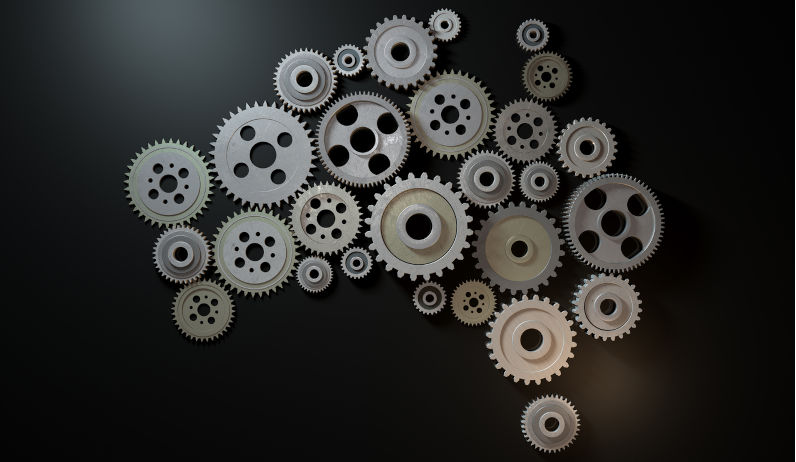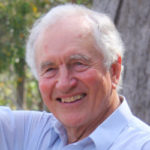Seventy years ago, British youth, dressed in tight jeans, pointed winkle picker shoes and with greasy duck’s arse haircuts, gathered on the beaches of seaside towns, usually well know for their Victorian piers. By adding rock’n roll music to their unusual appearance, the young Teddy Boys, also referred to as ‘Folk Devils’ added a colourful but challenging culture to a dour post-war Britain.
Their gathering on beaches affronted locals who considered the space theirs. The Teds were judged to be hooligans who caused crime, threatened moral standards and social harmony. A moral panic spread. Church, state, and media outlets declared British social cohesion at risk, law and order seriously threatened. Ten years later on Brighton Beach, the Mods and Rockers, successors to Teddy Boys, fought a pitched battle with deck chairs. Society was at risk, or was it?
In imitation of events which coloured the British Teddy Boy years, Australia is in the grips of its own moral panic, peppered with political anxiety about an alleged breakdown in social cohesion, claims peppered with fears about violence and even erosion of democracy. The claims have to be taken seriously, but how seriously? Could it be that the moral panic is exaggerated, even concocted?
It should not be suggested, should it, that historical precedents, King Henry the 7th’s Court of Star Chamber which stifled and punished critics of the king’s policies, or the Catholic Inquisition which accused, tried and executed heretics, have anything in common with the Australian establishment’s current preoccupation with alleged antisemitism. Yet a babble of powerful individuals and institutions sound like a self-righteous, morally judgmental chorus who know that in the form of supposed antisemites, heathens are at a civil society’s gates which must be defended with money, anti-terrorism laws, even the creation of new, highly respectable foundations.
Highly paid influential operatives rush to join this chorus: The Australian and Daily Telegraph newspapers, the prime minister, his Labor attorney-general, the former Queensland policeman turned opposition leader, a former Liberal treasurer able to create his own antisemitism foundation, diverse members of the Jewish Board of Deputies, of the Zionist Federation, vice-chancellors frightened into adopting or being seen not to adopt the sloppy, unclear but all encompassing International Holocaust Remembrance Association’s definition of antisemitism. And to foster the panic, the government-appointed envoy for antisemitism, Jillian Segal, wants the IHRA definition adopted by universities and appears in a right-wing newspaper to insists that Australian democracy is at risk. She knows. Does she?
Consider the rising number of incidents which fuel politicians’ certainty and newspaper editors’ dogma. On aggregate, these incidents may make the moral panic seem unjustified, even concocted.
Let’s begin with the discovery of that caravan filled with explosives in a lane near the NSW town of Dural. ASIO, the AFP, Attorney-General Dreyfus, Opposition leader Dutton, NSW Premier Minns, radio and print journalists were soon excited about a prospective, well-organised, highly dangerous terrorist plot to blow up a synagogue. Members of the Jewish community were said to be affronted and frightened. It was even claimed that foreign actors were involved, in which case this grubby caravan could contain evidence of international terrorism.
In vain, police pleaded they should be allowed to get on with their investigation without being hindered by leaks to the press and by media claims with no substance. More recently, it is rumoured that organised crime knew about the explosives and might have used them, hence the death of certainty about a caravan containing more evidence of antisemitism.
Meanwhile, 50,000 Gazans have been slaughtered, 11,000 lie somewhere beneath rubble and 100,000 have been seriously injured. Who cares in a country where time and attention are absorbed by a moral panic?
The work of artists and authors who paint pictures of injustice suffered by Palestinians has become the target of accusers certain that such work confirms evidence of an age old prejudice. The work might be interpreted as displaying not injustice but possible terrorism. In consequence the country needs an inquisition, plus punishment for the artists and authors.
The Australian newspaper and the NSW shadow minister for the arts criticised the work of Lebanese artist Khaled Sabsabi and curator Michael Dagostino for allegedly using images of an alleged terrorist act — a picture among other things of the late Hezbollah leader — to depict notions of inclusiveness as a form of futurism, a possible vision of a common humanity. How dare such artists threaten convention when everyone knows that dominant stories must come from a powerful lobby who always know best, so powerful that Creative Australia responds to the criticism by dropping Sabsabi and Dagostino from their appointment as Australia’s representatives at the 2026 Venice Biennale exhibition? Such deviant artists must be punished.
Macquarie University academic Dr Randa Abdel-Fattah may face a similar fate. The Australian newspaper judged her highly original efforts to reveal Arab, Muslim Australian activism for social justice as threatening.That this academic had been able to do this work because of her success in obtaining a large Australian Research Council grant must also show that she is guilty of wasting taxpayers’ money. Nothing like a waste of money to promote panic.
Noise from the usual critics, members of the Coalition, Jewish bodies and The Australian is so loud that the Federal Minister for Education Jason Clare is asked to intervene. Despite the principle of no political interference in the award of ARC grants, he asks the ARC to investigate.
It seems not unreasonable to suggest that when a panic is already underway, no possible heretics should be ignored.
As the latest terrible deviant, ABC radio journalist Antoinette Lattouf joins Dr Abdel-Fattah. For broadcasting the highly reputable Human Rights Watch report about the Israeli Government’s use of starvation as a method of warfare in Gaza, Lattouf was sacked, although managers looking for cover suggest she was merely terminated, let go.
How dare this young woman attempt to report truths which question the conduct of the most moral army in the world, a force which Lattouf’s critics would always defend? Human Rights Watch via a gutsy journalist was contributing to the fear that the public might be hearing information which would undermine a comfortable social cohesion. Truth could cause discomfort.
Then suddenly, willing perpetrators of the panic are caught with their pants down. Into a Newtown NSW general store comes a gentleman, determined to be known as Jewish by wearing Israeli insignia, a Star of David on his cap. He wants to know whether staff in the store are bothered by the appearance of someone who is Jewish. Simultaneously, by clever arrangement masquerading as journalism, a reporter and photographer from the Daily Telegraph appear. In sinister but apparent Faulty Towers-like, Monty Python fashion they could have become hero investigators had it not been for outraged store staff who perceived an act of deceit aimed at showing a prejudice which was already gaining traction elsewhere.
The last example in this aggregate of evidence is potentially explosive. On the one hand it appears to confirm the official claims that antisemitism is a cancer in the country’s midst. On the other it raises doubts about notions of influence, questions concerning the work of someone called an Influencer. Two nurses from Bankstown hospital judged sinister and antisemitic for saying they would not treat a Jewish patient, or might even kill one, or should be considered absurdly naive for co-operating with a so-called Israeli Influencer who boasted of having over 100,000 social media followers.
From whatever source, however serious, influence comes in many forms and always feeds on exisiting fears.
Assumptions about good behaviour were threatened by the appearance and conduct of Teddy Boys. Religious and political moralists were outraged.
In a country lane a grubby caravan filled with explosives apparently stolen some time ago becomes the catalyst for believing in a terrorist plot that must be about to happen somewhere.
Deviants at large are soon discovered to be gifted artists, a highly regarded academic and an insightful journalist. Each would be heard seen or read because they refused to conform.
At a time when citizens sit in the edge of a moral precipice over the ethnic cleansing of a whole people, the Palestinians of Gaza, a peculiar morality reigns. One historical precedent concerns Teddy Boys who should have been barred from beaches, hopefully never to be seen again.
Another fear, this time current and more serious, is being used to deflect attention not just from deviant acts but from human rights crimes.
Promoters of moral panics in Australia have gained notoriety by accusing individuals who appear to threaten social cohesion and convention. They do so by repeating suspicions of antisemitism, a very serious matter but even more so if charges are, ironically, made more on the basis of prejudice than irrefutable evidence.
Stuart Rees AM is Professor Emeritus at the University of Sydney & recipient of the Jerusalem (Al Quds) Peace Prize.

